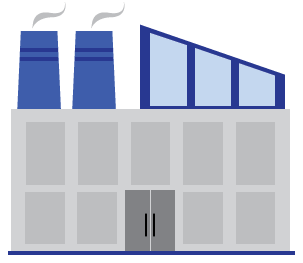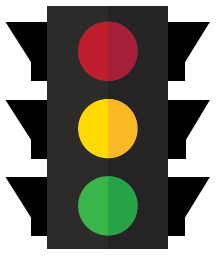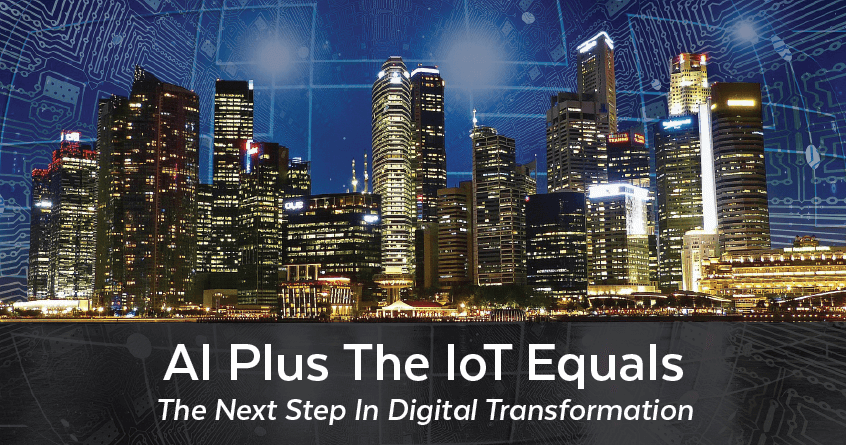“IoT is already well established and still set to grow, with more than 41 billion IoT devices in use by 2027. What’s more, Gartner predicts that more than 80 percent of enterprise IoT projects will include an AI component by 2022.”
Przemek Lopaciuk, ReadWrite | These Three Industries are About to be Hit by AIoT
Additional to this gaining popularity in connected devices, before the COVID outbreak, Embedded AI in support of IoT things/objects was on track to reach $4.6B globally by 2024. AI in industrial machines was on track to reach $415M globally by 2024, with collaborative robot growth at 42.5% CAGR. Machine learning will be playing a role in this growth surge.
Industries like transportation, supply chain, energy, and manufacturing are reaping the benefits of the added computing, analytical speeds, and other solutions that AI provides within the IoT context. The development of AI is a way to more fully manage connected technologies to speed up work processes and help eliminate human error.
How AIoT Works And What Is Better About It
“In the artificial intelligence of things, you can think of the internet of things devices as the digital nervous system, while artificial intelligence is the brain of the system.”
Bernard Marr, Forbes Contributor | What Is The Artificial Intelligence Of Things? When AI Meets IoT
AI technology combined with the Internet of Things in practical applications allows infrastructure to achieve more efficient IoT operations. Human-machine interactions will improve and enhance data management and analytics. AI will fill gaps where human limitations impede results.
Developers are embedding AIoT into software, chipsets, and platforms. Intel®, for example, offers a range of ICs that support supercomputing, edge-to-cloud, deep learning libraries, and ingredient chip solutions for other developers like Microsoft Azure and AWS. One idea under discussion is powerful implementation between connected-devices that would allow them to straddle between edge and cloud computing, speeding up delivery when needed, while allowing data to be stored to go to the cloud.
AI collects, harnesses, and implements data to manage industrial operations. It can use data from its operation or data supplied from external sources or a combination of both. AI with IoT will optimize machine-to-machine communication.
“IoT networks with both autonomic and cognitive functional components provide intelligent control for neural transport (detection and triggering of communications) and connect the overall system. The IoT technology market will benefit from engineering design in terms of Artificial Intelligence (AI) and cognitive computing placement in centralized and edge computing locations.”
Research and Markets, Artificial Intelligence AI in Big Data
The Edge Supports Data Loads Generated By AIoT
Edge computing speeds up data-heavy technologies because it keeps all of the processing and data much closer to its point of origin. Data doesn’t have to travel as far or compete with other incoming transmissions for bandwidth, saving money.
When you’re continually using massive amounts, not having to transport it to server operations can rack up significant savings.
AI synergizes solutions by allowing the inclusion of more advanced predictive capabilities. The ability to tap into trends that are transforming product and service ecosystems like the consumer, industrial, and enterprise verticals where the response to personalized service edges out competitors (no pun intended). AI is increasingly becoming an integral component of business operations, including supply chains, sales, and marketing processes, product and service delivery, and support models.
Manufacturing
 Smart factories and warehouses, which many agree have been the earliest adopters of IoT technologies, will have the next competitive advantage because they already have their IoT infrastructure in place. Having more of your operation online allows AI to leverage data points.
Smart factories and warehouses, which many agree have been the earliest adopters of IoT technologies, will have the next competitive advantage because they already have their IoT infrastructure in place. Having more of your operation online allows AI to leverage data points.
Remote sensors, smart meters, and production machines will not only be the source of operation critical insights, but they will be able to respond intelligently to AI implementations within their environments due to their capability to process the vast amounts of data.
The right products will reach the market more quickly. Production lines will automatically factor in external market demand, by providing new insights from this harvested operational data.
AI In Healthcare
 AI in healthcare can emulate human cognition and the analysis, interpretation, and comprehension of medical data, using a combination of complex algorithms and software. Additionally, data collected through remote sensors has the potential to keep people safe from infection, especially during highly contagious illnesses like COVID19. AI is essential whenever the amounts and complexity of data are this massive.
AI in healthcare can emulate human cognition and the analysis, interpretation, and comprehension of medical data, using a combination of complex algorithms and software. Additionally, data collected through remote sensors has the potential to keep people safe from infection, especially during highly contagious illnesses like COVID19. AI is essential whenever the amounts and complexity of data are this massive.
The categories where AI applications assist providers include diagnosis and treatment recommendations, patient engagement and adherence, and administrative activities. In many instances, AI outperforms humans in healthcare tasks but due to ethical issues, the idea of large-scale implementation is still in the future.
AI appears in healthcare in a variety of forms.
- Machine learning
- Language processing
- Rule-based expert systems
- Robots
- Robotic automation
- Diagnosis and treatment applications
AI And The Smart City
To harness intelligence from the big data pools collected by IoT devices around urban environments, authorities, businesses and residents need the analytical capabilities that artificial intelligence and machine learning bring to the table.
Traffic Monitoring
AI is making smart city roadways more responsive and even more anticipatory. One category that many have seen for some time is the smart traffic light. Sensor information monitoring traffic flow and vehicle detection shortens lights when no cars are present saving, commuters valuable travel time, and reducing frustration. Traffic monitoring systems also issue alerts in real-time to divert traffic to circumvent accidents, construction, and other situations as they arise.
Digital Signage And On-Demand Multimedia Content
Live video feeds and real-time surveillance fulfill the need for rapid transmission of diverse ranges of information in commercial environments. Electronic displays are becoming more targeted in the ability to present information to the public. AI can filter through massive amounts of data to respond to specific changes in an environment. The ability to detect changes will allow terminals to provide the right updates as needed. AI takes smart signage to new levels of relevance within the context of a smart city, shopping experience, or transportation hub.
AI in smart cities is going to play a big role in making urbanization smarter and growth sustainable, making the cities more convenient. Advanced features will improve environments where residents live, walk, and shop.
Final Thoughts On Leveraging AI With The IoT
This is a developing story. Having AI and analytics allows people to harvest insights from IoT data that is far too big for the human mind to grasp, much the same as a crane allows humans to lift materials and reach higher when constructing a skyscraper. AI is a fantastic tool. It really is the next stage of “cashing in” on all of the connectivity that the IoT brings.
To stay up to date on new technologies, follow us on Twitter.

